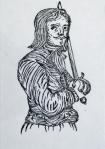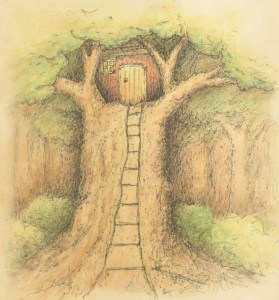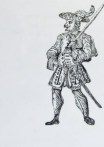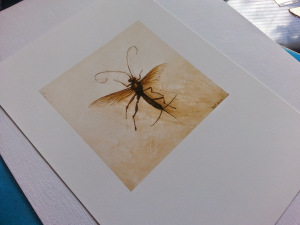Z.R. Southcombe's Blog, page 26
April 23, 2015
Ulterior Motives
Writing is a creative process and at the heart of creativity is self-expression – but sharing my ideas with the world isn’t enough to get me out of bed every single day; I do have an ulterior motive that drives me forward with more passion than self-expression ever could.
I’m twenty-six years old as I write this. I don’t have any education – beyond highschool – in English or in Creative Writing. I don’t have a lot of money or existing fame. I don’t have more access than most people in a first world country, and yet I have managed to write and publish books, and to do it with a positive response. In mine own eyes, I am successful.
I want my success, my drive and my passion to show others – specifically children, but adults as well – that if there’s something we really, truly want to do, then the whole universe conspires to help us (thanks to Paulo Coelho for that beautiful line).
This is what gets me out of bed in the morning. If I can do it, anyone can. People have looked at me and said to themselves, ‘Maybe I can do that, too.’ It’s for you that I get out of bed in the morning. Thank you.
April 22, 2015
Tea!
While most writers’ preferred beverage is coffee, I prefer a different caffeinated drink: tea (although there are some days when coffee is necessary – this morning, for instance).
This is from a post originally published on my writers blog, which still exists but I don’t add to anymore – enjoy!
Black Tea
Honestly, nothing really beats a good cup of black tea (though Joy might argue with Turkish Delight Hot Choc!). The standard here is Ceylon or English Breakfast (my favourite brands are Dilmah and Twinings, and there’s a NZ brand Chanui who do beautiful blends), which is usually seeped for a couple of minutes, then had milk added, and perhaps a spoon of brown sugar. Irish Breakfast is a stronger variant of this, andEnglish Afternoon is a lighter version. The next most common tea is Earl Grey, which people either love or hate, and British tradition tells us should be had black with a dash of lemon. It has the bergamot herb in it, which gives it a highly delicate flavour, a bit like lavendar. My new favourite, especially in the morning, is Assam Bold tea, preferring Twinings’ blend. For a black tea with a crisper feel, try Ceylon Orange Pekoe (it’s not an orange flavour, but an indication of the high tea grade).
Green Tea
I have to admit I’m not a huge fan of green tea, as it has an almost bitter tinge (make sure you don’t burn it by leaving the water to cool slightly after boiling) though I do like to have a little cup of it with dinner sometimes, especially as it’s good for the digestive system. When I do drink green tea, I use Chanui’s Organic Green, or Dilmah’s Jasmine Green. One I’d like to try is Twinings Lemon Green, as I think the lemon flavour might take a bit of the bitterness out of the green.
Fruit Tea
There are so many fantastic blends of fruit tea available, and they’re great in summer iced – just soak a couple bags of tea in a quarter cup of hot water, then pour over a tall glass of ice. Delish! For starters, I’d suggest a blackcurrant-based infusion, as it has a slightly sweet flavour and a smooth texture, like Blackcurrant & Apple. For slightly sweet bit of an edge, try Cranberry & Pomegranate blends. Twinings used to this amazing blend of Pink Grapefruit, Lime & Mandarin, so if anyone knows of a similar blend – let me know! It had a crisp texture, a refreshing sweet-and-sour flavour, and an uplifting after taste.
Rooibos Tea
‘Rooibos’ is Afrikaans for ‘Red Bush‘, as when the leaves are oxidised (or fermented, using technical tea terms) they turn a reddish-brown colour. Rooibos is mostly grown in South Africa, indigenous to the Cedarberg region, north-west of Cape Town, and – this is the important bit – it’s naturally caffeine-free. This means that you can enjoy a yummy black tea without having any extra caffeine – perfect for an evening cuppa. I’ve never had a bad cup of Rooibos, so I’d suggest that any brand is good, although I tend to buy Red Seal.
Kiwi Blends
Twinings have come out with two ’New Zealand blends’ on black tea classics. The New Zealand Breakfast has a super-smooth texture, almost malty, with a smoky after-taste. Somehow, it reminds me of camping – I LOVE it! The New Zealand Earl Grey has the traditional bergamot, but also has orange blossom, which appeals to a larger range of tea-drinkers with a sweet after taste.
Masala Chai (Indian Spiced Tea)
‘Masala’ is the Hindi word for ‘spice’, and ‘chai’ is the Hindi word for ‘tea’ – so masala chai quite literally means ‘spiced tea’. Now, I’m not talking about the Chai Lattes, made from a masala chai-inspired syrup, but the real deal. Basically, it’s a black tea (my preference is Assam) with spices in it. My favourite combination is star anise and cinnamon, with a hint of honey. Other spices I add on occasion are peppercorn (1 or 2 per cup), ginger (a wee slice), nutmeg, and cardamom. It is best brewed altogether on a stove-top from cold water – the flavours are infused beautifully this way.
Special Mention: Pirate Tea!
I had to put this in here – because Pirates, and tea, what more could one want? This was a Christmas pressie from friend & blogger Cat Brown, and is super awesome. You can see it in the photo above, and you can buy it here. It’s a mix of Gunpowder Green & Seaweed, in a tin – and even comes with a pirate map, and pirate ‘rules’. On a side note, Pirate Captain Bartholomew Roberts was known for his tea-drinking habits, due to his dislike of drunkenness at sea. Who woulda thunk it?
So what new tea will you try from this list? And what tea blends would you add? (I might already have a grand collection, but I love trying new ones – I’m looking forward to your suggestions).
April 20, 2015
Radio Review
Yesterday came with exciting news that I had a review on the radio! I was uber-nervous listening to it, cause I had NO idea what the reviewer, Ngaire ‘BookieMonster’ would say! Thankfully, she only had wonderful things to say, and I’m so appreciative of her sharing my book.
Want to hear the review? Just click play below:
April 19, 2015
Quitting
We all feel like quitting at some point. No matter where we’re at, sometimes it feels like the next hurdle is just too big.
Often, it’s not about fearing failure, but fearing success. Because if you try something and you don’t succeed, you’re still in the same place – if you do achieve, and climb that mountain, what do you do when you reach the top? Personally, I want to climb a bigger mountain! (Of course, I try to enjoy the view from the top first).
April 17, 2015
Pirates!
 François l’Olonnais
François l’OlonnaisBorn Jean David Nau, this ruthless pirate was better known as François l’Olonnais. He was one of the most barbaric pirates in the Golden Age of pirating (17th century). He was rumoured to have cut the heart out of a captive to chew on while he continued questioning the rest of the captive crew – yuck!
Henry Every
Henry Every had a number of aliases during his life Long Ben, John Avery and Benjamin Bridgeman. He was popular while he lived, and lots of people wrote stories and plays about him. In the 17th century, this was equivalent to making movies or TV shows about someone – so he was a bit of a celebrity.
Bartholomew Roberts
More commonly known as Black Bart (yep, that reminded me of The Simpsons, too!), Roberts was a hugely successful pirate and like to dress in grand clothing. Many people think it’s because he was bold, confident and ambitious but I think it also had something to do with his drink of choice – unlike the traditional pirate’s beverage of rum, Roberts chose to drink only tea.
April 16, 2015
Oak Tree
In the story The Caretaker of Imagination, there’s a treehouse in the enchanted forest which is home to a talking mouse and other wonderful creatures. It’s also one of John Carroll’s favourite places.
 The treehouse is set in a giant oak tree because the primary school I went to used to have an oak that we’d play in. The lower branches – which were still much higher than ourselves – were for swinging and climbing. We’d collect the acorns and burnt-orange leaves in autumn, and sit in its shade in summer.
The treehouse is set in a giant oak tree because the primary school I went to used to have an oak that we’d play in. The lower branches – which were still much higher than ourselves – were for swinging and climbing. We’d collect the acorns and burnt-orange leaves in autumn, and sit in its shade in summer.
One year, they had to cut it down. The roots were affecting the drainage in the carpark, and I still sting a little when I see the stump where the tree once was.
Even earlier than that was a weeping willow, which was a place of enchantment and possibility and pure escapism. This was cut down long before the oak, and might have to make its own cameo in a future story.
April 15, 2015
Name dropping
For the April A-Z blogging challenge, I’ll be blogging about my latest release, The Caretaker of Imagination.
There are several characters in this story who are named after people in my life, or little nods to people who inspire me. Of course, this doesn’t mean the character is anything like the person, it’s just my little reference!
Cuthbert - This is my grandad’s name, on my dad’s side. He lived with us growing up, and was really special to me. He passed away a couple of years ago, and I still miss him dearly. He actually told me the story about the tiger (which you can read in chapter 6) and I believed until I was NINE years old – talk about having a good imagination! (Or being extremely gullible. One of the two).
Cynthia - This was my grandad’s wife – my grandma. I’d never met her, as she died before I was born. I’m told she was elegant and proper, so I took those traits out and exaggerated them a bit (or a lot).
John - I wanted the main character to have a fairly ordinary name, so that really, he could be anyone. Some of you know I’m an artist as well, and if you’ve seen my art you’ll know I do silhouettes a lot. I do these for the same reason – it means anyone can transpose themselves into the work and become a part of it. John is also the name of a family friend of ours, who I had a conversation with about being a child again, and sparked this story.
Theo - The cat in this story is named after a child I met while working at a school holiday programme. He had an interesting view on the world, and was quite insightful.
 Myrtle - I used to have a little green car, that one of my friend’s nicknamed Myrtle. The name stuck, and I loved that little car – even though it was sometimes hard to get her up a hill! I ended up having to get rid of her, but gave her the chance to live on in my story.
Myrtle - I used to have a little green car, that one of my friend’s nicknamed Myrtle. The name stuck, and I loved that little car – even though it was sometimes hard to get her up a hill! I ended up having to get rid of her, but gave her the chance to live on in my story.Lucy - This is a little nod to one of my favourite series, The Chronicles of Narnia. Lucy is a gorgeous character full of imagination and love, and is the basis for my character as well.
Carroll – At a point when I felt The Caretaker of Imagination was too far from a normal narrative structure, I read Alice in Wonderland. This comforted me, as it’s such a nonsensical story, but it still works. John’s last name is inspired by the author, Lewis Carroll.
If you’re interested in the book, you can purchase it from one of the links below:
April 14, 2015
Male Perspective, Female Writer
Before I started writing this book, I wasn’t sure if I could pull off the male perspective. The male and female genders are different, right? I’m not overly feminine by any means, but I’m certainly not masculine!
Early in the writing process, I was doing some research at the library. I’d pulled out all the how-to books on writing, and there was one in particular that had information most relevant for me – How to write for children and get published by Louise Jordan.
This book made an excellent point – you don’t have to think any differently! Sure, male and females have quite different attitudes sometimes, but for the most part, we’re all just people 
Interested? Get your copy here.
April 13, 2015
Little Black Bugs (also known as Jane Thorne, illustrator)
My illustrator hasn’t always been an illustrator. Mostly, she’s a painter, and she paints… bugs!
Her studio is home to a fantastic collection of insects (well, photographs of the insects) and her paintings bring these little guys into the limelight. I’m always amazed at how human, and full of character, her paintings are.
Jane has illustrated one book before, which was about the other kind of bugs – germs! Apart from that, The Caretaker of Imagination was her first one. Since then, she’s illustrated This Is My Life, a children’s picture book by Anne Vrankovich (out soon!) and of course, Lucy’s Story: The End of the World, which will be released in May / June (NZ Winter).
To see more of Jane Thorne’s beautiful artwork, go to her website: littleblackbugs.com
April 12, 2015
Keeping the good bits – on editing
Guiding advice for editing my work is to ‘skip the boring bits’. One thing I ask my beta readers (people who give me feedback on the early versions of my manuscript) is what bits were boring? Those are the parts I cut out.
Eventually, I’m only left with the good bits – the bits that drive the story forward, that explore deeper into a character, or the bits that are just a little bit funny!
The following ideas were originally posted on my writing process blog in July, 2013, but I think they have a new home here:
Read your work out loud. This is the absolute best advice I can give anyone for their writing. When you read your work out loud, you notice easily which bits don’t quite make sense and which bits ‘flow’ the best. Writing and reading are intrinsically linked.
Build suspense. I am specifically referring to the hanging scene here, especially as it really needs to hook the reader in, but perhaps in other areas as well. Keep the reader guessing – what are they going to do? What’s going to happen? We love a book that keeps us wanting to know more.
Be consistent with your tense. Past tense is the easiest to write in, but whatever you choose, stick to it.
Don’t underestimate your audience. If you’ve described someone as being excited, you don’t also have to say that they’re excited – we have already made the connection, which links to…
…show don’t tell. Some bits are not hugely significant, so you can just state it (otherwise your writing will become far too wordy to enjoy), but other parts can be described with more ‘oomph’ – think about describing sight, sound, touch, smell and FEELINGS.
Look at places you have repeated words in close vicinity of each other. Reading the same term too many times gets confusing for the reader. Sometimes you can say ‘it’ instead, other times think of a different way of saying the same thing.
What would you add?







